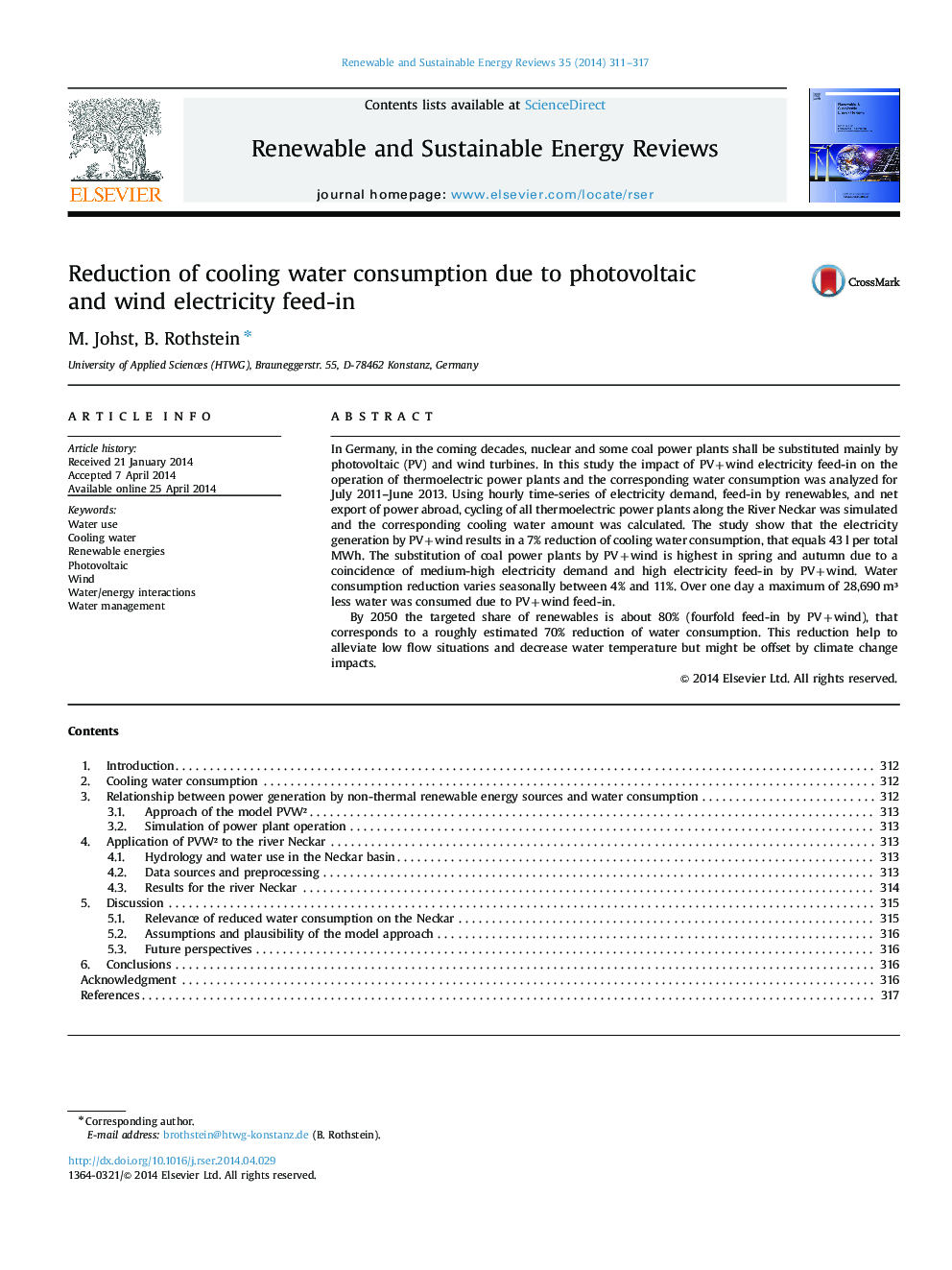| Article ID | Journal | Published Year | Pages | File Type |
|---|---|---|---|---|
| 1750388 | Renewable and Sustainable Energy Reviews | 2014 | 7 Pages |
In Germany, in the coming decades, nuclear and some coal power plants shall be substituted mainly by photovoltaic (PV) and wind turbines. In this study the impact of PV+wind electricity feed-in on the operation of thermoelectric power plants and the corresponding water consumption was analyzed for July 2011–June 2013. Using hourly time-series of electricity demand, feed-in by renewables, and net export of power abroad, cycling of all thermoelectric power plants along the River Neckar was simulated and the corresponding cooling water amount was calculated. The study show that the electricity generation by PV+wind results in a 7% reduction of cooling water consumption, that equals 43 l per total MWh. The substitution of coal power plants by PV+wind is highest in spring and autumn due to a coincidence of medium-high electricity demand and high electricity feed-in by PV+wind. Water consumption reduction varies seasonally between 4% and 11%. Over one day a maximum of 28,690 m³ less water was consumed due to PV+wind feed-in.By 2050 the targeted share of renewables is about 80% (fourfold feed-in by PV+wind), that corresponds to a roughly estimated 70% reduction of water consumption. This reduction help to alleviate low flow situations and decrease water temperature but might be offset by climate change impacts.
